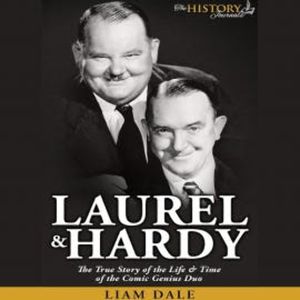Mention the names Arthur Stanley Jefferson and Norvell Hardy to a cinema-adoring crowd and you'll get countless reactions in return. A few may scratch their heads. Others may fumble with their ties and grin nervously. If you're very unlucky, someone will start to cry. But mention the names Stan Laurel and Oliver Hardy and those reactions will become associated with the characters they know and love. These were the names that made them famous and still conjure up images today. Laurel & Hardy. Popular but not populist. They appealed to the masses; and the masses have kept them in the public eye long after they hung their derby hats on life's wooden hatstand for the very last time. Clowns, which is essentially what Laurel & Hardy are, have their roots in every form of culture, reaching back further than you can throw a custard pie. Even if you had a custard-pie-throwing machine you'd never hit the very first clown. There are references in the Bible to clowns, and we do know that Greeks and Romans used them as popular forms of entertainment, right through to Court Jesters of yesteryear and Stand-Up comedians of today. Probably the greatest of all 'English' clowns, aside from Charlie Chaplin, was a thin, wiry fellow called Dan Leno, who was plying his comedy towards the end of the nineteenth century. This was at a time when Queen Victoria was head of the Royal Family. Stan Laurel cited Leno as one of his major influences and it's easy to see why. He was a past-master at being a female impersonator and originating the 'comedy cry', which was so beloved of Stan Laurel himself. He was also, towards the end of his life and career, partnered with a rather overweight gentleman called Herbert Campbell. They were a roaring success and it's easy to see echoes of them in the teaming of Laurel & Hardy. Humour is an endless recycling of original ideas, which surely makes it the most environmentally friendly of all art-forms! So, let us look at two of the most successful clowns in more detail. Stan Laurel and Oliver Hardy. Their public and private life ran along parallel lines and frequently crossed over. We shall examine the public persona that came alive on the silver screen with the private person that lived in the real world. We begin at the very beginning.
Laurel & Hardy
- Sprecher
- Dauer
- 47 Minuten
- Verlag
- Typ
- Ungekürzt
- Format
- Hörbuch Download
- ISBN
- 9781789325850
- Sprache
- Englisch
- Kategorie
Vollversion anhören
4,99 €
Beschreibung
Bewertungen und Rezensionen
Nur angemeldete Nutzer können Bewertungen abgeben. Jetzt anmelden
Die Meinungen stammen von angemeldeten Kunden, die unser Produkt oder unsere Dienstleistung gekauft haben. Die Meinungen werden in Übereinstimmung mit den Bewertungsrichtlinien gesammelt, überprüft und veröffentlicht.
Vollversion anhören
4,99 €
